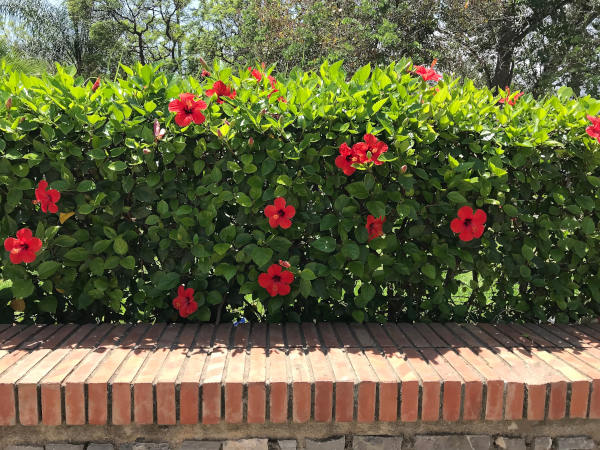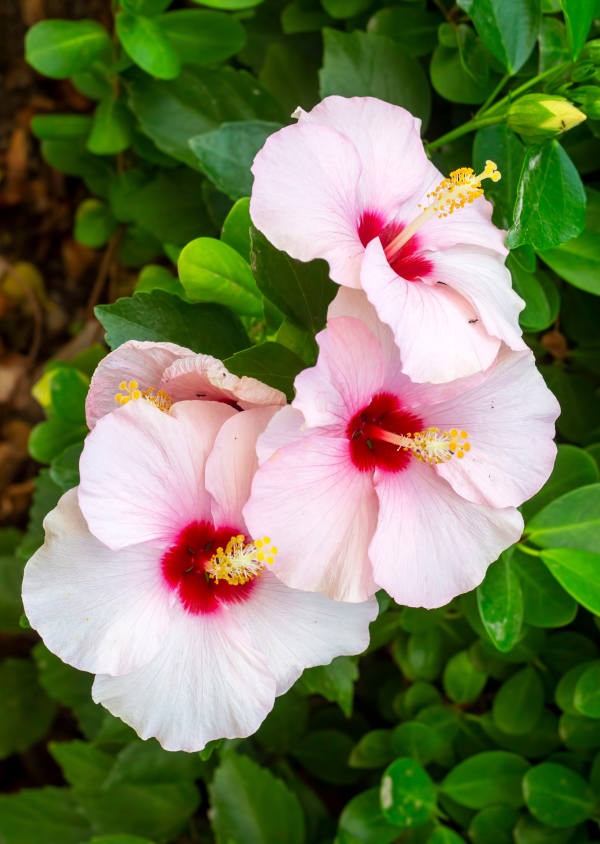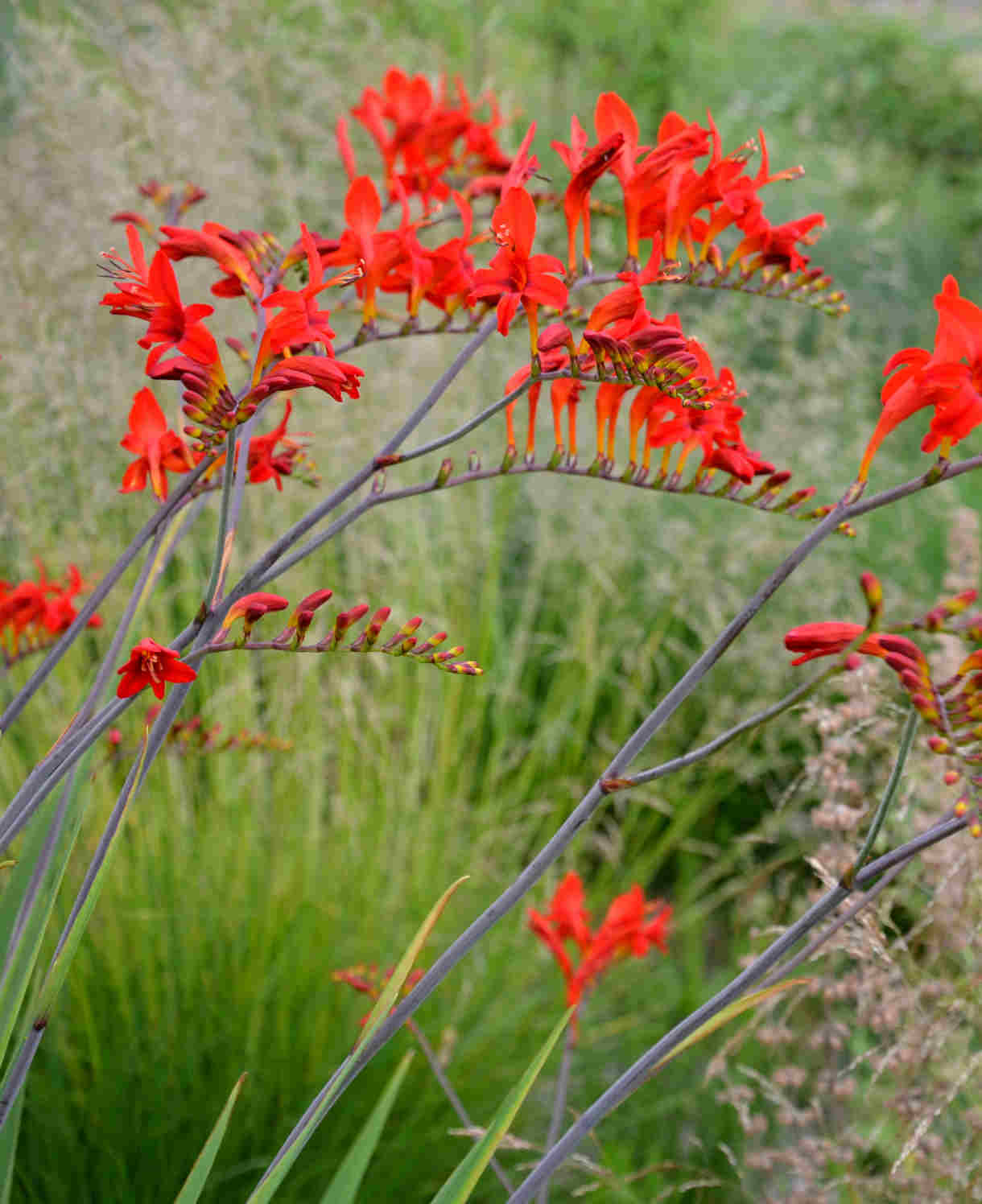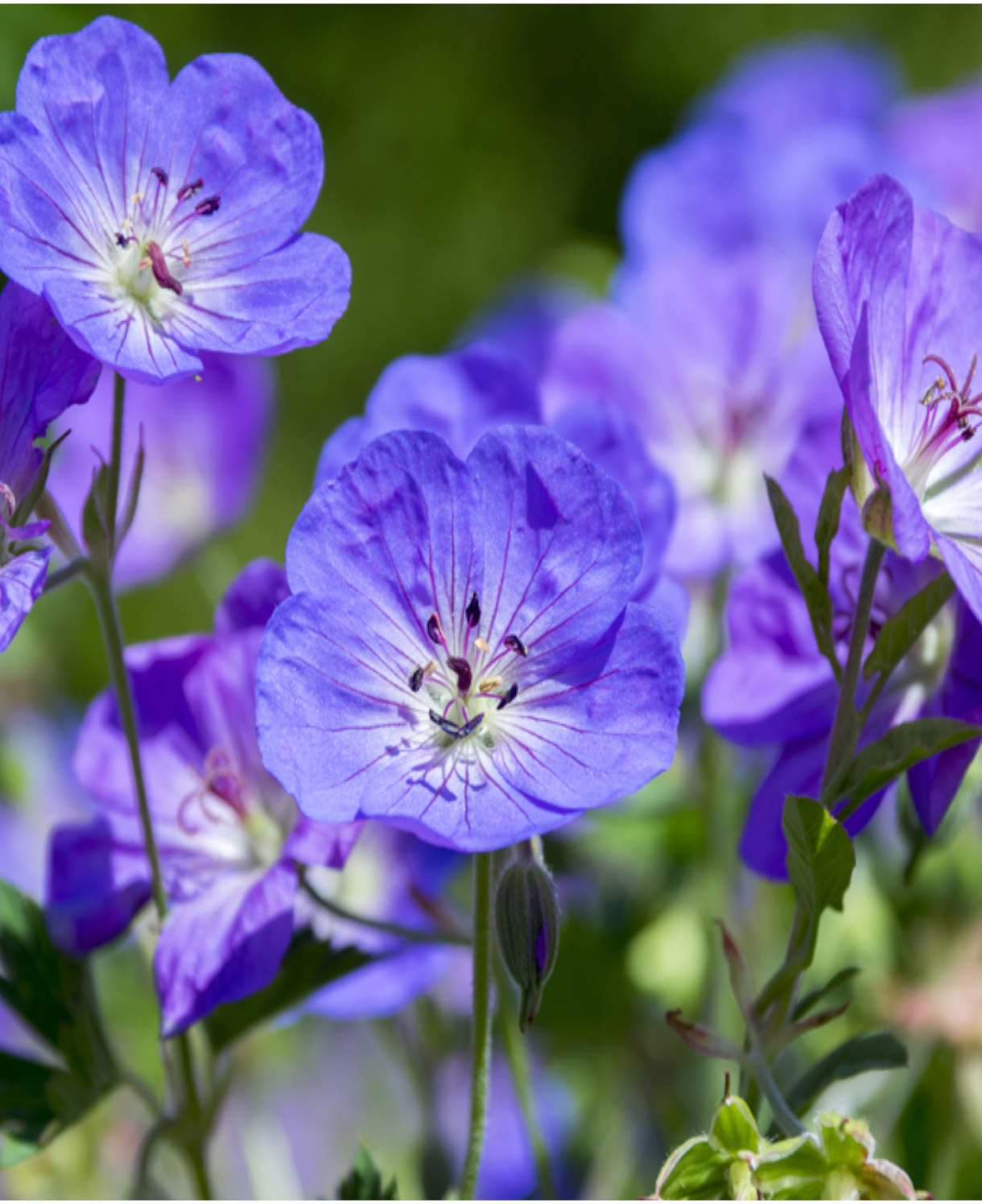How to grow Hibiscus
A large genus of plants which encompasses nearly 300 different species. Plants are renowned and admired for their large, showy flowers.
In our temperate climate the two most commonly found are: Hibiscus syriacus – also known as Rose of Sharon or Syrian Mallow and native to East Asia; and Hibuscus moscheutos – also known as Common Rose Mallow, hardy Hibiscus or Swamp Mallow and native to Southern, Central and Eastern parts of North America. These are the two species which we currently supply and to which these notes relate.
Hibiscus syriacus likes long, hot summers in order to produce decent flowers so areas which are inclined to higher levels of rainfall may not be ideal. A medium to large deciduous shrub reaching up to 4m tall. Plants prefer moist, well-drained soil and a sheltered position in full sun. Foliage is ovate to diamond shape with three lobes and roughly 10cm in length. Large trumpet shaped flowers, 8-10cm across, appear in late July and through to September in good hot summers. Colours tend towards pink, red, blue and white with decorative, protruding tubes of stamen to the centre. Ideal for southern counties or growing under glass, not so well suited to northern counties.
Hibiscus moscheutos is a tall, strong herbaceous shrub with upright stems and broad, serrated foliage with fluffy hairs to the underside. Flowers appear in summer and are up to 20cm across with spreading petals in varying shades of whites and pinks, sometimes with a dark central eye. Plants prefer a moist, well-drained soil which is preferably clay or loam based. Locate in full sun with a sheltered south or west facing aspect.

Zantedeschia is a genus of flowering plants from the family Araceae and is native to southern Africa. With a rich history dating back to the Ancient Romans, these deciduous or semi-evergreen perennials have been used as a symbol of celebration. Zantedeschia was Named after Professor Giovanni Zantedeschia, an Italian botanist.
There are two main forms of Zantedeschia: hardy and tender. Hardy forms of the plant can be grown outdoors, enjoy moist soil and full sun or partially shaded conditions - these are known as Arum lilies. Tender forms of Zantedeschia prefer being grown in containers or pots and should be brought inside over the winter - these are known as Calla lilies.
With tuberous flora in all colours from whites, yellows and oranges to deep reds and purples, Zantedeschias are not to be overlooked in any garden, as long as they have sufficient sunlight to grow in.
Ready to learn more about growing Zantedeschia? Read on for all there is to know...

Key Information
Soil pH
Position
Hardiness


Where & when to plant Hibiscus
Position - Full sun with a degree of shelter and a south or west facing aspect
Soil type - Moist, well-drained soil or well-drained soil
Flowering Period - Summer and early autumn
Hardiness - Rated H4 (-5 to -10°C) to H5 ( -10 to -15°C) depending on species and cultivar
Both varieties of hibiscus need certain things: sunshine (the more the better); well-drained soil; a degree of shelter from the wind; and moisture. Plants will happily settle in containers from where they will need a repot every 2-3 years or in the herbaceous border as long as the first 4 requisites are met. Aside from this they are actually relatively easy going shrubs which, when they bloom, far outweigh effort with the reward of stunning blooms.
How to plant Hibiscus
- For planting in the ground, dig the soil area removing any large stones and weeds and breaking up any lumps. Mix in some organic matter such as manure or garden compost. If your soil is heavy clay, now is also the time to add a generous helping of horticultural grit. Rake level and firm with your heels. Rake level again.
- Water plants well and allow to drain before planting.
- A good tip is to dig a hole twice the size of the root-ball. Fill with water and allow to drain before placing in the plant.
- Place the plant in the hole at the same level as it is in the pot.
- Backfill with soil and firm in gently with your foot.
- Soak well with water.
- For planting in containers, first choose an appropriately sized pot. The best practice is to start just a few centimetres larger than the rootball and increase in size every year or two. Always ensure there are plenty of drainage holes in the bottom.
- If you are using a large or heavy pot, it can be a good idea to fill and plant it in situ to save yourself the trouble of moving once full.
- Use a good quality potting compost with plenty of horticultural grit mixed in, and, if not already present in the compost (check the description on the bag) some slow-release fertiliser granules.
- Start by partially filling the pot with compost. Place your plant in the pot with the roots spread out as much as possible.
- Infill all the space surrounding the root ball with compost, firming down with your fingers then adding a little more so the plant is held tight. Leave a small gap of around 3cm between the compost and the top of the container.
- Pick up the pot and lightly tap on the potting bench or ground a few times to help further settle the compost around the plant.
- Soak well with water.
- A mulch with horticultural grit will look attractive and help to prevent a ‘cap’ or crust forming on the top of the compost (something container plants can suffer due to the artificial nature of their watering).

What to plant with Hibiscus
As sun worshippers these plants go well with other annuals and perennials which appreciate similar conditions. Bearded iris will appreciate lots of sun and flower with equal exuberance just before your hibiscus burst into flower. Crocosmia will offer upright, swordlike foliage to contrast with hibiscus and geum or hardy geraniums will cover the ground beneath to complete the ensemble.



How to care for Hibiscus
Pruning and Deadheading
Deadheading is done for aesthetics as it does not promote the production of more blooms on either variety of hibiscus. From a pruning perspective, either hibiscus should naturally form a well-branched framework and require very little pruning. Any tidying and removal of dead or damaged branches should be done in late winter or early spring. After pruning your hibiscus will benefit from a mulch and feed to promote a healthy, vigorous plant.
Watering
As with most young plants, moisture levels should be maintained whilst plants establish a good root structure during the first couple of years. After this, watering should only be necessary during long, dry spells unless plants are growing in containers. If container grown then check soil is moist beneath the surface by sticking your finger in the pot – water if dry.
Feeding
On healthy, fertile soil, an annual spring mulch of well-rotted organic matter (i.e., a layer of manure or garden compost applied to the soil around the plant) should provide sufficient nutrients for your hibiscus. This has the added benefit of suppressing weeds and locking in moisture. Make sure you leave a small gap between the mulch and the base of the stem, to avoid rotting.
For an extra boost applying a general purpose granular feed to the surface of the soil and lightly working in (known as a ‘top dress’) can reap benefits. Aim to do this once or twice a year if needed.
Container-grown plants rely more on the gardener for their nutritional needs. Get off to a flying start by making sure you use a good quality compost, then throughout the growing season (March to September) apply a liquid feed at regular intervals mixed according to the instructions. Alternatively, top dress with a general purpose granular feed every three months throughout the growing season.
Cold Protection
Most hibiscus are hardy enough to withstand an average UK winter, with resilience varying between -5°C and -15°C depending on variety. Plants value protection from cold winds and like a south or west facing aspect. If container grown extra attention may be required though pots can be either moved or covered during colder spells. In very cold regions, it can also be worth wrapping the containers in fleece, hessian, or bubble wrap just to be on the safe side.
Pests and Diseases
Pests tend to leave daphne alone, though issues such as root rot or sudden dieback may occasionally occur. More often than not, these are down to poor drainage, making it important to choose as well-draining a spot as possible. If your soil is liable to sit wet, incorporate plenty of grit when planting. Make sure you use a very well-draining compost mix if growing in a container (i.e., one with a high grit content).
How to propagate Hibiscus
Both types respond well to propagation from semi-ripe cuttings in summer using the current year’s growth. This should be firm and woody at the base, while still soft and pliable at the tip.
- Choose non-flowering stems which meet the description above and snip off the plant, aiming to take a longer piece than the ideal eventual length of around 10cm (to allow for trimming).
- Put in a plastic bag straight away to prevent drying out.
- Fill a pot (or several, if you have a lot of cuttings) with a perlite-heavy compost mix (at least 50% perlite).
- Trim the end of the cutting to just below a node (point at which leaves grow).
- Remove lowest leaves and soft tip, leaving 2-4 leaves.
- If the remaining leaves are large, cut them in half with a sharp knife (to reduce water lost through transpiration).
- Insert the cuttings into the compost and water lightly. Several cuttings can be put in the same container if there is enough space to do this without them touching.
- Place in a greenhouse or propagating unit if you have one or covered with a plastic bag on a windowsill if not (out of direct sunlight).
- Keep the cuttings misted and occasionally watered until they root. You will know this has happened when roots emerge out of the bottom of the container.
- Gently remove rooted cuttings and pot them into individual pots. Grow on in a cool yet frost-free environment such as an unheated conservatory, greenhouse, or cold frame, until they are large enough to be planted out following out ‘How to plant daphne’ guidance above.
* Many plants carry Plant Breeders Rights and cannot be propagated for commercial purposes.
Common Hibiscus questions
Is Hibiscus easy to grow?
The key to growing these 2 varieties of hibiscus is to give them plenty of sunshine, some shelter from cold winds with a south or west facing aspect and a moist, well-drained soil. Meet all these requirements and they are easy going and very rewarding plants.
Can you grow Hibiscus in pots?
Yes, smaller varieties are best suited to container growing so check the mature height and spread of your chosen variety as well as the speed of growth. Keep plants well-watered and fed, remembering to top dress annually.
Does Hibiscus need sun?
Yes, a minimum of 6-8 hours a day. The more sunshine, the more flowers so avoid consistently shady areas.
Do Hibiscus come back every year?
Yes, these are deciduous shrubs which lose their leaves and become dormant in winter, resprouting again each spring.





